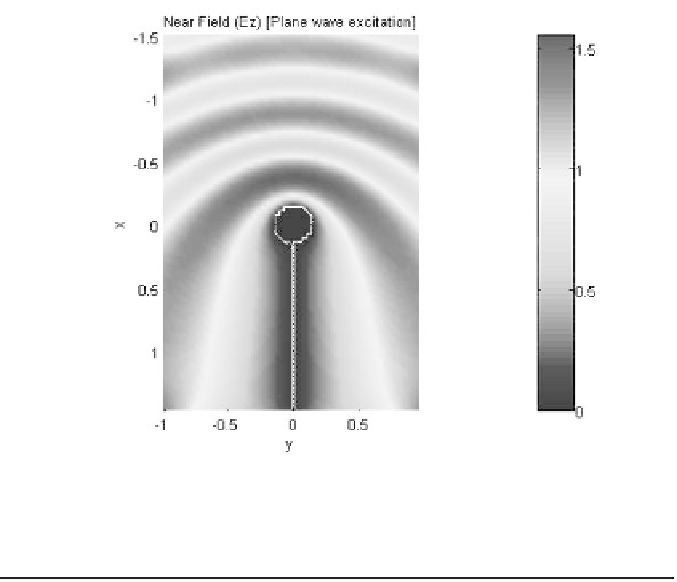Graphics Programs Reference
In-Depth Information
E
z
Figure 11.55. near field pattern of a plane wave incident on a half plane with
a conducting capped edge. All other parameters are as in Fig. 11.31.
11.7. RCS of Complex Objects
A complex target RCS is normally computed by coherently combining the
cross sections of the simple shapes that make that target. In general, a complex
target RCS can be modeled as a group of individual scattering centers distrib-
uted over the target. The scattering centers can be modeled as isotropic point
scatterers (N-point model) or as simple shape scatterers (N-shape model). In
any case, knowledge of the scattering centersÓ locations and strengths is critical
in determining complex target RCS. This is true, because as seen in Section
11.3, relative spacing and aspect angles of the individual scattering centers
drastically influence the overall target RCS. Complex targets that can be mod-
eled by many equal scattering centers are often called Swerling 1 or 2 targets.
Alternatively, targets that have one dominant scattering center and many other
smaller scattering centers are known as Swerling 3 or 4 targets.
In NB radar applications, contributions from all scattering centers combine
coherently to produce a single value for the target RCS at every aspect angle.
However, in WB applications, a target may straddle many range bins. For each
range bin, the average RCS extracted by the radar represents the contributions
from all scattering centers that fall within that bin.

Search WWH ::

Custom Search